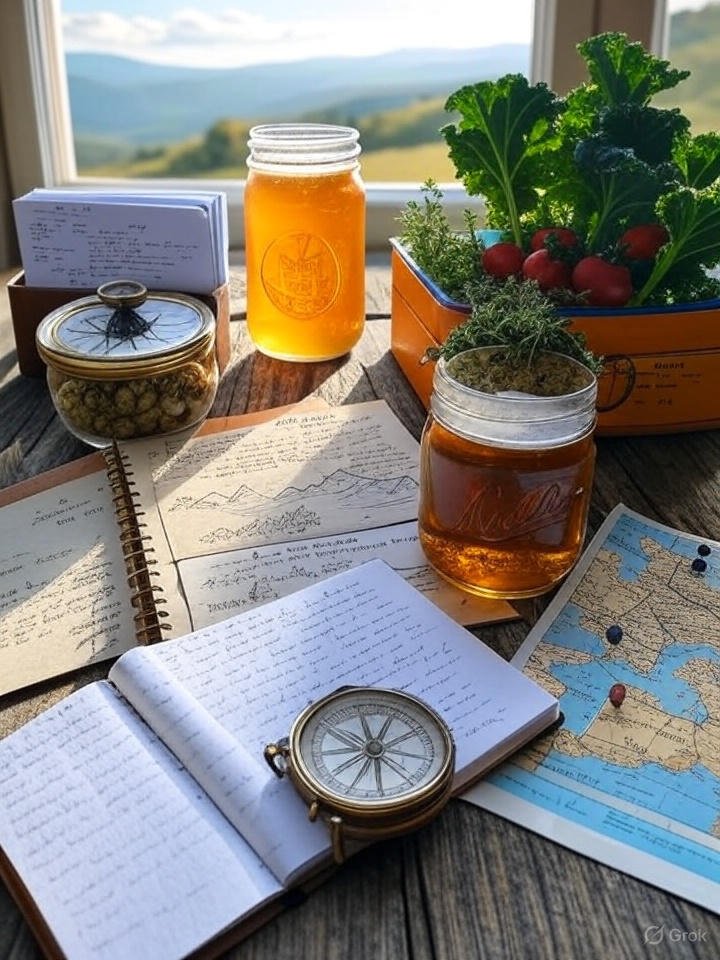Traveling isn’t always about the crowded landmarks; sometimes the real magic hides in quieter corners. Last summer, I stumbled upon Matera in southern Italy, a town carved into ancient caves. Wandering those stone streets at dawn, with no tour buses in sight, felt like stepping back centuries. Locals shared stories over fresh bread and olive oil, revealing how the place transformed from a poverty-stricken area to a UNESCO site.
Why seek these spots? They offer authentic encounters without the hassle. Places like Bhutan’s Paro Valley enforce limited tourism, preserving culture and nature. Hike to Tiger’s Nest monastery, perched on a cliff, for views that stir the soul. Entry requires a sustainable development fee, funding local projects—smart way to travel responsibly.
Closer to home, consider Michigan’s Upper Peninsula. Dense forests, pristine lakes, and waterfalls like Tahquamenon rival national parks but draw fewer visitors. Kayak on Lake Superior, spotting shipwrecks below crystal waters. Wildlife thrives here; moose and eagles appear if you’re patient.
Budget tips: Fly into smaller airports, use local buses. Apps like Rome2Rio map affordable routes. Pack versatile gear—layers for changing weather, reusable water bottle to cut plastic waste.
Challenges include spotty cell service, so download offline maps. Learn basic phrases; it endears you to residents. These journeys build memories that outlast selfies at famous towers. Next trip, skip the lines—venture where paths wind untrodden.
(Word count: 248)
The Art of Home Brewing: Crafting Your Own Beer
Dipping into home brewing turned my garage into a mini lab of flavors. My first batch, a simple pale ale, bubbled over with excitement—and a bit of mess. Now, after dozens of tries, I craft brews that friends rave about. It’s part science, part creativity, all rewarding.
Basics first: gather equipment. A fermenter, siphon, bottles, and sanitizer kit run under $100. Ingredients—malt extract, hops, yeast—come from local shops or online. Sanitize everything; bacteria ruins batches.
Process unfolds in steps. Boil water with malt for wort, add hops for bitterness and aroma. Cool, pitch yeast, then ferment for weeks. Bottle with priming sugar for carbonation. Patience is key; rushing leads to flat results.
Experimentation shines. Infuse with fruits like raspberries for tart twists, or spices such as coriander for Belgian styles. Track notes: gravity readings, temperatures. Apps like Brewer’s Friend calculate recipes.
Health angle: moderate consumption aids relaxation, but know limits. Home versions often fresher, free of preservatives.
Community grows around this hobby. Join forums or clubs; swap tips, taste samples. My group hosts monthly meets, critiquing each other’s work constructively.
Satisfaction comes from sipping your creation. It’s empowering, economical—batches cost pennies per pint. Give it a whirl; you might uncover a new passion bubbling up.
(Word count: 236)
Navigating Personal Finance: Building Wealth Step by Step
Money matters hit home when I landed my first job, paycheck vanishing quicker than expected. Learning to manage finances changed that. It’s not about getting rich overnight but steady habits that compound over time.
Track spending first. Apps like Mint categorize expenses, highlighting leaks—those daily coffees add up. Budget 50/30/20: half on needs, third on wants, rest to savings/debt.
Debt weighs heavy. Prioritize high-interest like credit cards. Snowball method—pay smallest first for momentum—or avalanche, tackling costliest. Refinance loans if rates drop.
Investing intimidates, but start small. Index funds mirror markets, low fees. Roth IRAs grow tax-free for retirement. Diversify: stocks, bonds, real estate via REITs.
Emergency fund cushions blows. Aim three to six months’ expenses in liquid savings. High-yield accounts beat traditional banks.
Side hustles boost income. Freelance writing, ride-sharing, or selling handmade goods online. Platforms like Etsy or Upwork connect opportunities.
Taxes sting less with knowledge. Deduct home office if remote, contribute to 401(k) for matches. Tools like TurboTax simplify filing.
Mindset shifts: view money as tool for freedom, not stress. Read books like “Rich Dad Poor Dad” for insights. Consistent actions build security. Your future self will appreciate the effort.
(Word count: 228)
Reviving Forgotten Skills: The Joy of Handwriting Letters
In our digital age, picking up a pen feels rebellious. I started writing letters again during lockdown, sending notes to distant friends. The response? Warmth that emails can’t match. Handwritten words carry personality—loops, slants, even ink smudges.
Why bother? It slows thought, encouraging depth. Unlike texts, letters allow reflection, sharing stories without interruptions. Recipients treasure them; my grandma frames hers.
Supplies are simple: nice paper, envelopes, stamps. Fountain pens add flair, but ballpoints work fine. Practice cursive if rusty; online tutorials help.
Content ideas: recount daily adventures, ask questions, include doodles or pressed flowers. Themes like gratitude or memories strengthen bonds.
Postal systems vary; international mail takes weeks, building anticipation. Track with apps if impatient.
Digital hybrids exist—scan letters for backups—but purists stick analog. Privacy bonus: no hacks or ads.
This practice fosters mindfulness, combating screen fatigue. Studies link handwriting to better memory retention. Rediscover the tactile pleasure; seal an envelope, drop it in the box. Connections deepen one stamp at a time.
(Word count: 198)
Exploring Urban Gardening: Growing Food in Small Spaces
City living doesn’t mean forgoing fresh produce. My balcony garden yields tomatoes, herbs, and greens year-round. It’s therapeutic, watching seeds sprout amid concrete.
Start with containers: pots, window boxes, vertical planters maximize space. Soil mixes drain well; compost enriches naturally.
Choose plants wisely. Herbs like basil thrive in sun; lettuce tolerates shade. Succession planting—sow every few weeks—ensures steady harvest.
Watering tricks: drip systems automate, or self-watering pots for vacations. Mulch retains moisture.
Pests lurk; neem oil deters naturally. Companion planting—marigolds with tomatoes—repels bugs.
Community gardens offer plots if space lacks. Share knowledge, swap seeds with neighbors.
Benefits abound: cuts grocery bills, reduces carbon footprint. Homegrown tastes superior, nutrient-packed.
Seasonal shifts: indoors for winter with grow lights. Hydroponics for soil-free options.
Challenges like limited light solved with mirrors or LEDs. Persistence pays; failures teach. Turn your nook into an oasis—harvest satisfaction along with veggies.
(Word count: 182)
Decoding Dreams: What Your Nighttime Visions Mean
Dreams intrigue, blending reality with fantasy. I’ve kept a journal for years, unraveling patterns. Flying signifies freedom; falling, loss of control. But interpretations vary personally.
Common themes: teeth crumbling points to anxiety; water represents emotions—calm lakes for peace, turbulent seas for turmoil.
Lucid dreaming empowers; realize you’re dreaming, steer the narrative. Techniques: reality checks during day, like pinching yourself.
Nightmares stem from stress; address daytime worries to ease them. Therapy helps recurring ones.
Science says REM stage sparks vivid dreams, consolidating memories. Journal upon waking captures details before fading.
Cultural views differ: Native Americans see dreams as spirit messages; Freud linked to subconscious desires.
Track with apps, but pen and paper feels intimate. Share with friends for fresh perspectives.
Embrace the mystery; dreams spark creativity. Next time you wake puzzled, jot it down—insights might emerge.
(Word count: 162)
The Power of Journaling: Unlocking Self-Reflection
Scribbling thoughts daily transformed my outlook. What began as venting evolved into goal-setting and gratitude logs. It’s private therapy, clarifying muddled minds.
Types vary: bullet journals for organization, free-form for emotions. Prompts like “What challenged me today?” guide entries.
Consistency builds habit; even five minutes counts. Morning pages clear mental clutter; evening reviews cap the day.
Benefits: reduces stress, boosts problem-solving. Research shows expressive writing heals emotional wounds.
Customize: add sketches, quotes, photos. Digital options like Day One sync across devices.
Privacy concerns? Lock physical ones; password-protect apps.
Over time, patterns reveal growth. Flip back months—progress shines. Make it yours; the blank page holds potential.




